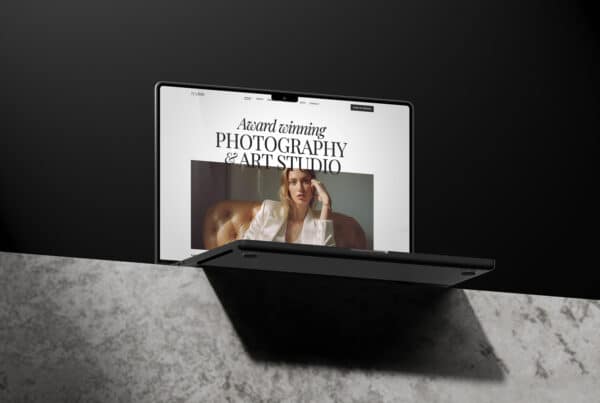Navigating the Confluence of Design, Technology, and Psychology in UX
In the intricate dance of creating digital products that resonate deeply with users, User Experience (UX) Design emerges as the choreographer, orchestrating the movements between design, technology, and the nuanced understanding of human psychology. This craft extends far beyond the mere aesthetics of products; it delves into the essence of what makes a product not just usable, but delightful, what kindles a lasting relationship between the user and the product, and what, unfortunately, might drive them apart.
At DesignX, the heart of UX design lies in a relentless quest for intuitive user interactions, achieved through a meticulous process of enhancement and refinement. Guided by seasoned professionals, this process ensures digital products are not just functional but seamlessly integrated into the user’s life, catering to their needs with an almost prescient understanding.
This comprehensive guide aims to demystify the layers of UX design, offering insights into its fundamental processes, techniques, and best practices. Whether you’re on the cusp of a design career, an established professional seeking to deepen your expertise, or a business leader keen on harnessing UX design to elevate your organization, this narrative is your beacon.
What is UX design? The Art of Seamless Interactions
UX design is the art and science of sculpting digital experiences that feel as natural as breathing to the user. It’s about eliminating friction, anticipating needs, and making every interaction a stepping stone towards the user’s goal. While visual aesthetics play a role, UX design’s soul lies in crafting the product’s experience blueprint, its ecosystem, and affirming its value in the user’s journey.
Empathy is the cornerstone of UX design. It involves a deep dive into the user’s world, understanding their emotions, motivations, and barriers as they navigate through digital landscapes. This empathy is not passive; it’s an active engagement that informs every decision, every line of code, and every pixel on the screen.
The UX Design Process: A Symphony of Empathy and Innovation
The UX design process is a symphony of empathy, creativity, and pragmatic problem-solving, grounded in the principles of user-centered design and design thinking. Design thinking is a collaborative odyssey, inviting users into the creative process, ideating in the realm of what “could be,” and bringing those ideas to life through iterative testing. User-centered design, on the other hand, anchors these flights of creativity in the user’s reality, focusing on their goals, environments, and expectations.
User Research: The Bedrock of Empathetic Design
Every UX journey begins with understanding the users, their aspirations, and the hurdles they face. This phase is about asking the right questions, diving into the user’s world through a variety of research methods, from in-depth interviews to immersive observations. This is where assumptions are challenged, and real, data-driven insights come to light, forming the foundation upon which all design decisions are made.
Analysis: Crafting a Mosaic of User Insights
Armed with research, designers embark on a process of synthesis, weaving together the diverse threads of user data into coherent personas. These personas are vibrant tapestries of potential users, alive with goals, needs, and motivations. They serve as north stars, guiding not just design decisions but fostering a shared understanding of the user across the entire organization.
Empathy Mapping and User Journey Visualization
Beyond personas, UX designers employ empathy maps and user journey maps to gain deeper insights into the user experience. Empathy maps serve as windows into the user’s soul, capturing what they say, think, feel, and do. This holistic view allows designers to craft experiences that resonate on an emotional level, addressing not just the functional but the emotional needs of the user.
User journey maps take this a step further, charting the user’s path through the digital landscape. These maps highlight touchpoints, moments of interaction that can make or break the user experience. By identifying and optimizing these touchpoints, designers ensure that the journey through a digital product is not just seamless but also engaging and rewarding.
Design: Bringing Ideas to Life
With a solid understanding of the user, the design phase begins. This is where abstract ideas start taking concrete form. Information architecture lays the foundation, organizing content and features into a coherent structure that mirrors the user’s mental model. Wireframes and prototypes then build on this structure, translating it into visual and interactive representations that can be tested and refined.
Wireframing is the skeleton of the design, outlining the basic layout and interaction patterns without getting bogged down in visual details. Prototyping adds flesh to this skeleton, creating interactive models that simulate the real user experience. These prototypes are invaluable tools for testing, allowing designers and users alike to explore and validate design concepts before any code is written.
Testing: Validating Designs with Users
Testing is where the rubber meets the road. It’s an opportunity to validate design assumptions and gather real-world feedback from users. Through methods like usability testing, A/B testing, and heuristic evaluation, designers gain insights into how users interact with their creations, what works, what doesn’t, and why.
This feedback loop is crucial for iterative design, a core principle of UX. It’s about continually refining and improving the product based on user feedback, ensuring that the final product not only meets but exceeds user expectations.
Build and Iterate: The Continuous Journey of Improvement
The UX design process doesn’t end with testing. It’s a cyclical, iterative process that continues even after the product is launched. The build phase brings designs to life, translating wireframes and prototypes into fully functional digital products. But the work doesn’t stop there. Post-launch, UX designers continue to monitor user interactions, gather feedback, and refine the product, ensuring that it evolves in step with user needs and expectations.
UX Best Practices: Elevating the User Experience
While the UX design process is complex and multifaceted, certain best practices can significantly enhance the user experience. These include establishing a clear visual hierarchy to guide users through the digital space, prioritizing accessibility to ensure that products are usable by as wide an audience as possible, and avoiding dark patterns that manipulate or deceive users.
Collaboration is another key best practice in UX design. Designing exceptional user experiences requires input from diverse perspectives, including designers, developers, product managers, and, most importantly, users themselves. By working collaboratively, teams can create products that are not only technically sound but also deeply resonant with users.
Conclusion: The Essence of UX Design
At its core, UX design is about understanding and empathizing with the user. It’s a continuous process of exploration, creativity, and refinement, aimed at creating digital products that not only serve a functional purpose but also enrich the user’s life. The ultimate goal of UX design is to create products that are so intuitive and enjoyable to use that the design itself becomes invisible, allowing users to achieve their goals with ease and delight.
As the digital landscape continues to evolve, so too will the field of UX design. But the fundamental principles of empathy, user-centered design, and iterative improvement will remain the bedrock of creating meaningful and engaging digital experiences. Whether you’re a budding designer, an experienced professional, or a business leader looking to leverage the power of UX, understanding and applying these principles is key to creating digital products that stand the test of time.
Need help revitalizing your User Experience? At DesignX we have curated the top 1% of design and strategy you can access on a subscription basis to help you craft the ideal product experience. We are experts in conversion rate optimization, user experience, user interface design and much more… at a fraction of the price of hiring a full-time designer. Get unlimited design for a fraction of the price.



